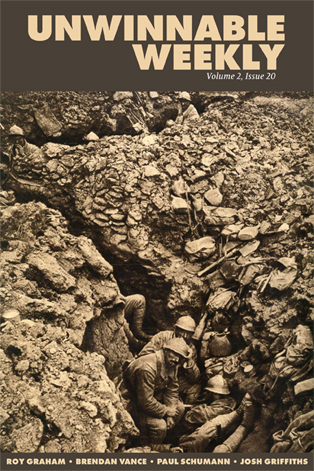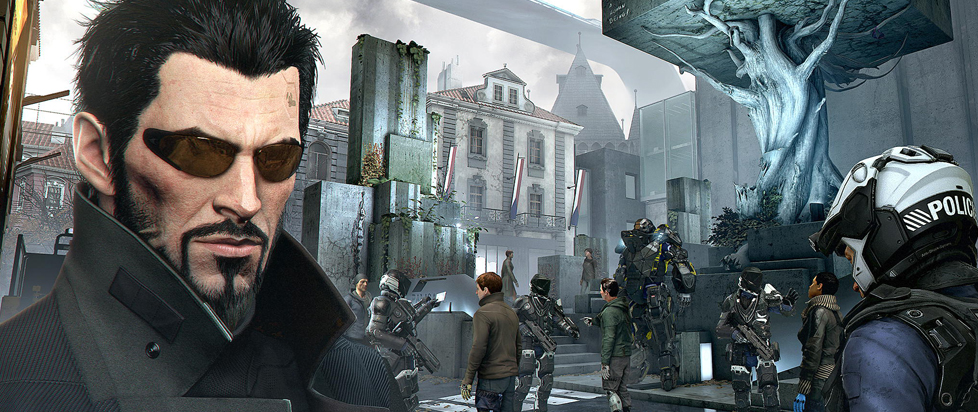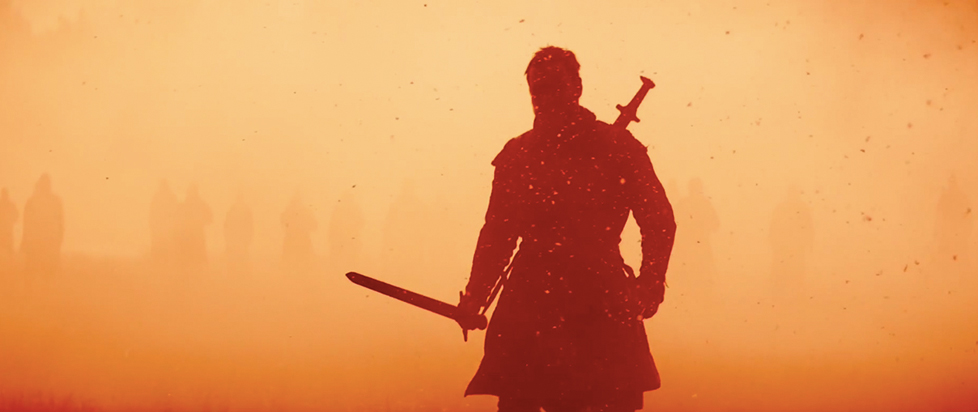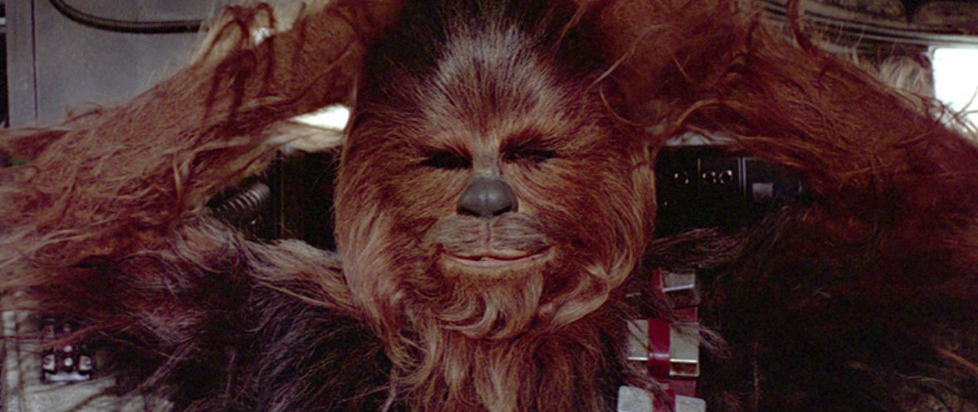
The Essential Quality of Star Wars
The following is a reprint from Unwinnable Weekly Issue Seventy Two. If you enjoy what you read, please consider purchasing the issue or subscribing.
———
Last month, Star Wars: Battlefront hit the computers and consoles of hungry Star Warriors everywhere (you can have that one for free, Lucasarts) with impeccable timing. While Battlefront will be competing with other major holiday releases such as Fallout 4, Halo 5 and the last chapter of Starcraft 2, its shared franchise puts it in the orbit of a true supernova of hype: J. J. Abrams’ highly anticipated Star Wars reboot, The Force Awakens, which hits theaters on December 18. Fan desires to step into the galaxy far, far away have seldom been higher than they are right now.
And that’s what Star Wars: Battlefront certainly seems to offer: a portal to the titanic clashes many of us spent our childhoods trying to recreate with just a backyard and some cardboard tubes spray-painted in pastel colors. So far, EA seems to be a lot more successful than eight-year old me: the game has been almost universally praised for its Star Wars-ness. But what exactly does that consist of?
The world of George Lucas’ films has never been rendered with such graphical strength before, but more important is the fidelity of detail. I didn’t know I needed to hear the sound a TIE fighter makes as its ion engines increase in speed, but now I would suffer no substitute. I didn’t realize that Stormtroopers die in a particular way until I saw it happen on screen — arms splayed, legs kicked into the air like they’ve slipped on a banana peel. When I choose the DL-44 for the high damage on its laser bolts, I was surprised to discover that I equipped the same blaster used by Han Solo.
And it’s important to realize that what Battlefront accomplishes here is not the representation of any one iconic sight or sound, but rather a cohesive portrait of a world. Its merits as a game, with lasting appeal, are currently in debate, but as a travel-pass to the setting it is, I think, inarguably a success.
Or part of the setting, at least. The part that everyone cares about. The Battlefront reboot does seem to be ignoring a certain part of the Star Wars canon, though. As in, a solid half of the films.
I know, I know. Few people are going to raise a cry for the prequels, with their forgettable attempts at galactic intrigue, their over-reliance on CGI, and, you know, that whole Jar Jar Binks situation. I’m sure most of the Star Wars fanbase is as eager to forget episodes one to three as Battlefront seems to be, but you can’t just claim benevolent subservience to fans, here, because it’s not like the prequels were ever popular, and that didn’t stop the series before.
The very first game in the series, Star Wars: Battlefront, was split down the middle, featuring battles  on Hoth and Endor as well as Naboo and Geonosis. Some planets, such as Yavin 4 and Tatooine, could be played both during the prequel timeline and the original timeline, with the armies taking the appearance of either clone troopers and battle droids or Stormtroopers and Rebels. Hero units ranged from Qui-gon Jinn and Darth Maul to Luke Skywalker and Darth Vader. Star Wars: Battlefront 2, which, like 2015’s Battlefront, was developed by a different studio, is structured similarly.
on Hoth and Endor as well as Naboo and Geonosis. Some planets, such as Yavin 4 and Tatooine, could be played both during the prequel timeline and the original timeline, with the armies taking the appearance of either clone troopers and battle droids or Stormtroopers and Rebels. Hero units ranged from Qui-gon Jinn and Darth Maul to Luke Skywalker and Darth Vader. Star Wars: Battlefront 2, which, like 2015’s Battlefront, was developed by a different studio, is structured similarly.
How can we praise Battlefront for possessing that intangible quality of Star Wars-ness if it ignores such a sizable chunk of the Star Wars canon? What does that quality mean in this case? And it can’t just mean nostalgia fuel, relegated to the original trilogy alone, because come December 8, Battlefront is going to feature a new map called the Battle of Jakku.
So far, we only have a teaser trailer for the Battle of Jakku, but it looks to be a large-scale conflict, in league with the AT-AT assault on Hoth. We hear muted laser blasts and explosions over the labored breathing of a rebel soldier; as the camera pans up from a charred Stormtrooper helmet lying in the sand, the sound intensifies and we see the pandemonium of a battle in progress. The desert around you is covered in crashed TIE fighters and Rebel ships, the debris from an orbital battle you can see still being waged above you. AT-ATs stomp through the wreckage; X-wings blast Stormtroopers in flyby attacks. With almost viscous sluggishness, a badly damaged Imperial Star Destroyer falls from the sky.
It looks, and feels, pretty damn Star Wars, but the Battle of Jakku hasn’t been in a single movie; if anything, it’s a prequel for the upcoming film.
In all the trailers for The Force Awakens so far, we’ve seen Jakku, though we haven’t known to call it by that name. It’s that expansive desert John Boyega wakes up in in the first teaser. The cavernous technological hulk we see Daisy Ridley exploring, in the second, may be the very Star Destroyer we see in slow-motion crash above the battlefield. The Battle of Jakku, in the lore, is set in between Return of the Jedi and The Force Awakens. It holds no nostalgia, except by look, if I can use the term. Like the rest of Battlefront, the blasters, the sounds, the action, will undoubtedly contain that essential feature of Star Wars-ness.
The Battle of Jakku will just be the first map in a series of additional releases; the DLC arriving in 2016 will almost surely contain more maps and battles from Episode VII. Obviously, Battlefront isn’t afraid of associations with The Force Awakens. It looks, more, to be courting them. Is that just to accumulate hype, though?
Separate from its own PR interests, considering Star Wars: Battlefront as being one cell in the larger organism that is Star Wars might help us understand its curation of content. For months now — including its own hype cycle and now release — Star Wars: Battlefront has been used as a focusing lens of sorts, reminding its audience about the good old days of the series, and most importantly, turning attention away from the reviled prequels. Already on the other side of the original three films, and coming from a new director to the series, it makes sense that the brand wants to differentiate itself as strongly as possible from the last few entries.
But it’s an evasive maneuver, a way of controlling the conversation. Lucas himself directed the prequels, even saying publicly that he always intended to make them. Whether you like the films or not, they’re as much a part of the Star Wars brand as the original trilogy. Their exclusion from Battlefront seems so deliberate, it’s hard to imagine it being anything but a way to focus our attention elsewhere.
It’s strange to think of a game as highly hyped, budgeted and developed as Star Wars: Battlefront as a CD at the bottom of a cereal box, but at least one of the functions its serving is as a PR tool: reminding us what the Star Wars brand is supposed to look and feel like, just in time for a new serving.
Think of it as the Coke Classic of space operas.
———
Roy Graham is a writer whose work has appeared in Kill Screen, Indiewire and upcoming short story collections. He lives in Brooklyn and spends his time thinking about fight scenes.





